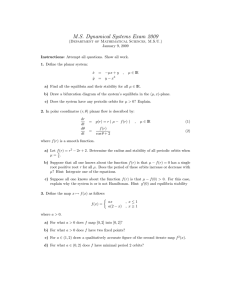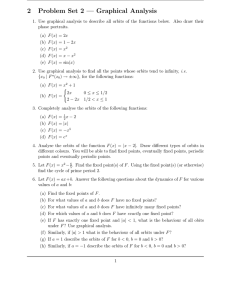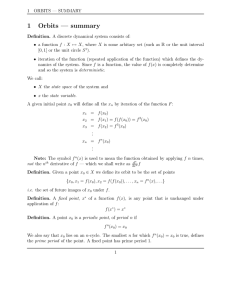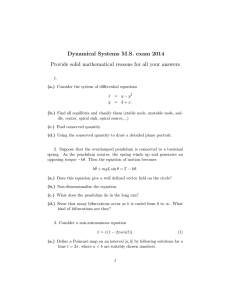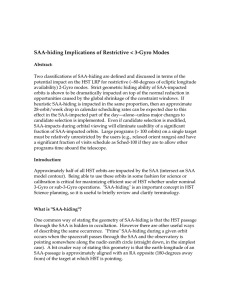ACS Survey Workshop: Motivation Steven Beckwith March 22, 2001
advertisement
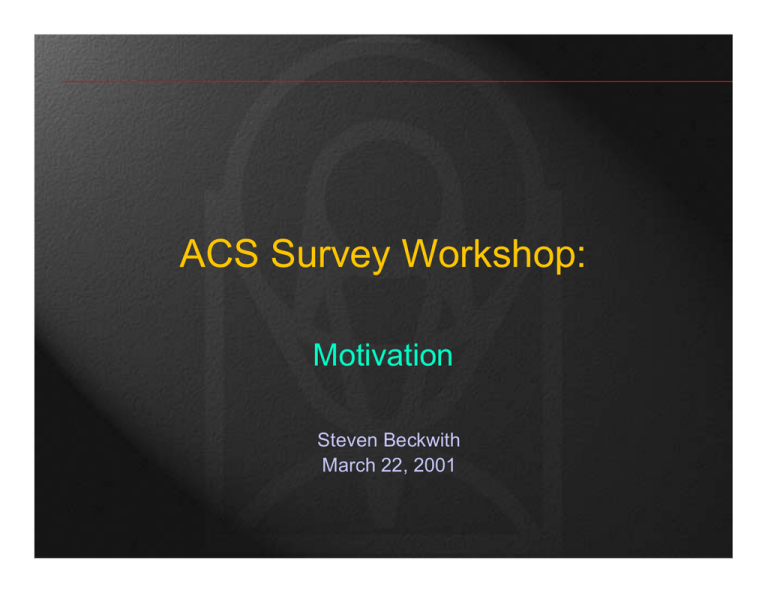
ACS Survey Workshop: Motivation Steven Beckwith March 22, 2001 Issues The Astrophysical Journal • The highest impact programs on HST • Peer review and the balance of program size • Exploratory science • Proprietary science vs. open source nature HST Top 10 (1991-99 citations) ΩΛ Εγ ? Galaxy evolution (HDF) • H0 & the distance scale • AGN & black Holes Ωbaryon • Active galaxy emission Lines A disproportionate fraction of the major • QAL Systems discoveries came from major projects ? High-z supernovae: ΩΛ N 3% of time and 25% of top 20, 60% of top 5. • ISM Chemistry ? Gamma Ray Bursts ? Disks around Young Stars • Stellar deaths Mplanet TAC recommendations Cycles 1-7 Small projects, 1-30 orbits Medium projects, 31-99 orbits Large projects, >100 orbits Projects Orbits %Orbits 2063 17,047 76.3% 105 4,291 19.2% 5 990 4.4% Time Allocation Committees have difficulty assigning Cycle 10 time to very large programs, Projects risky programs, and %Orbits Orbits programs1-30 thatorbits are exploratory. Small projects, 109 1346 46.1% Medium projects, The history31-99 of theorbits HST TAC shows 20the difficulty 983 of producing another Large projects, >100 orbitsHDF. 7 589 Public data access was an important element in making good use of the HDF. 33.7% 20.2% Selection of large proposals: Cycle 10 Cycle 9 vs 10 Requested Orbits 5000 • Size distribution in Cycles 9 & 10 • Oversubscription ratio – Holding steady at 5.8 – Flat with #orbits requested Orbits – Many large proposals Orbits Cycle 9 4000 Orbits Cycle 10 3000 2000 1000 0 > 0 00 0 0 0 0 0 0 0 0 -1 -9 -8 -7 -6 -5 -4 -3 10 91 81 71 61 51 41 31 21 0 -2 -1 11 1 Orbit Bin The challenge of prediction: “Our results show that the most sensitive exposures achieved so far from the ground reveal more galaxies per unit area than will be seen by planned HST observations unless galaxy sizes decrease with the maximum rate consistent with ground-based observations. In this, the most favorable case for HST, the space exposures will show almost as many galaxy images as have been observed so far in the most sensitive ground-based data.” Bahcall, Guhathakurta, & Schneider 1990 Science, 248, 178. The Hubble Deep Field z: 1.01 z: 5.34 z: 2.01 z: 5.60 z: 2.93 z: 2.97 z: 3.43 STScI Science Project: R. Williams. et al. (1997) The Legacy of the HDF • 241 publications (cited original PASP paper) – 207 from community (83%) – 20 STScI 1st author (10%) – 14 additional with at least 1 STScI co-author (7%) • Follow up: – – – – – Radio Submillimeter (SCUBA) Infrared (ISO) Optical (Keck) X-ray (CDF-N, S; XMM) • $842 k awarded science grants for HDF north – $726 k in 17 grants to non-STScI groups (86%) – $116 k in 3 grants to STScI PIs for data analysis (14%) – $100 k internal data analysis of HDF (technical) The HDF hadfor the highest impact of any HST program as measured by citations. 102 1600 1700 1800 104 1900 Year of observations Keck, VLT, Gemini ... HST CCDs Telescopes alone Mount Palomar 200” Soviet 6-m Photography 106 Mount Wilson 100” Rosse’s 72” Herschell’s 48” Short’s 21.5” Huygens eyepiece Slow f ratios 108 Galileo Sensitivity improvement over the unaided eye Imaging & Discovery After Fig. 3.10 in Cosmic Discovery, M. Harwit 1010 Photographic & electronic 2000 108 SDSS 106 BTC40 INTMGS EIS NOAO CNOC2 VIRMOS Deeprange EISDPS CNOC VIRMOSdeep CFDF Ω (arcmin-2) 104 CFRS CADIS LDSS MDS EISdeep 102 Hawaii DS 1 22 24 Groth 26 5σ limiting AB magnitude HDF 28 Motivation for Workshop • To determine the potential for new surveys with ACS • To identify areas for teaming on large initiatives • To advise on areas for a public survey with Director’s Discretionary time
